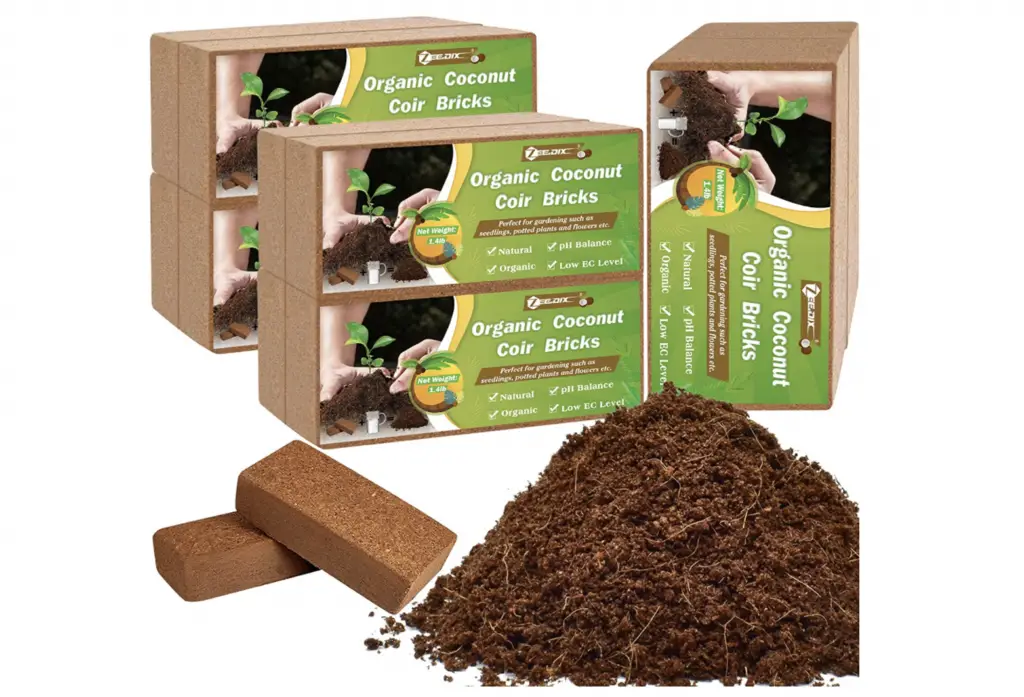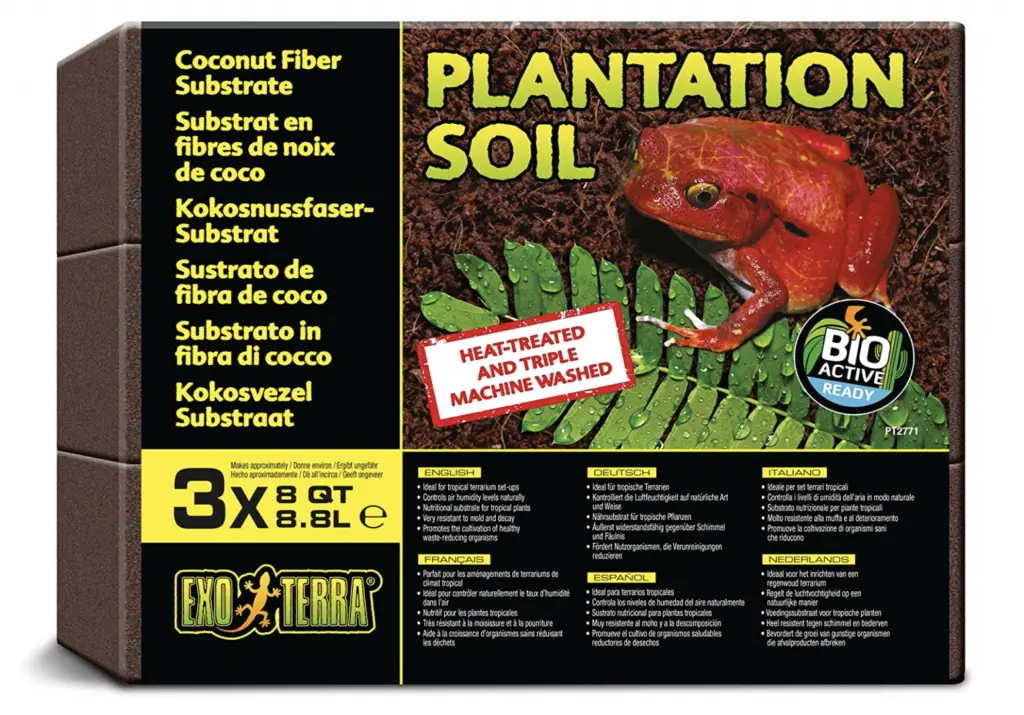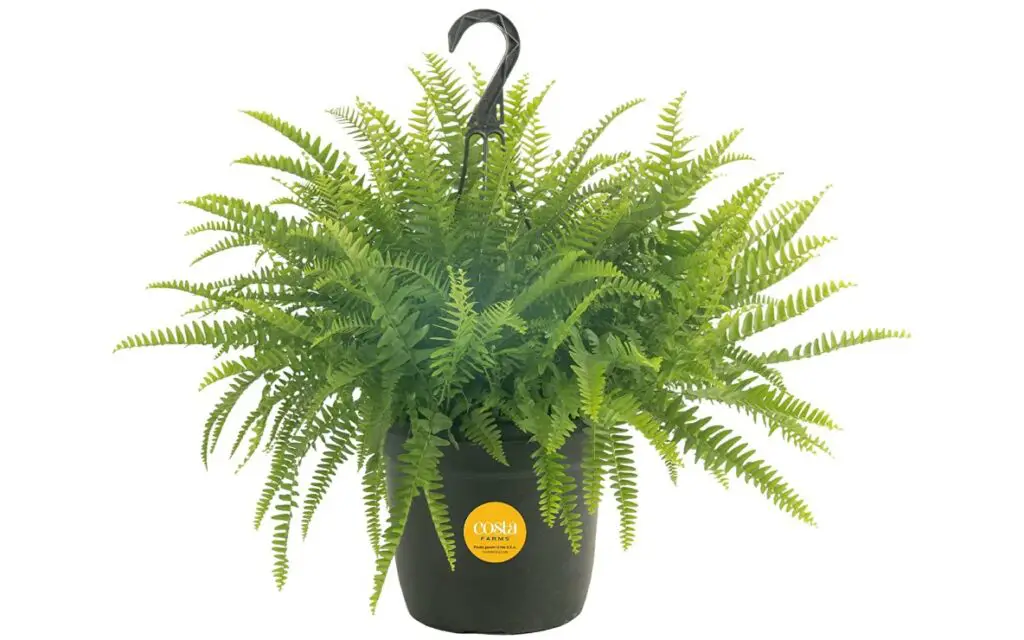Bioactive Enclosures: What to Know
Although artificial enclosures are more common, and a very popular choice for those just starting out with jumping spiders, some hobbyists prefer to keep their spiders in what is known as a bioactive enclosure.
A bioactive enclosure is a naturally balanced habitat for your spiders. The plants and soil found in these types of enclosures are meant to provide everything your spiders need to stay healthy, including moisture, a hiding place, and a microclimate.
Not only are bioactive enclosures a natural way to keep your spiders happy, but they’re also a beautiful addition to your home.
What Do You Need to Know About Keeping a Bioactive Enclosure?
If you’re interested in keeping a jumping spider bioactive enclosure, there are a few things you should know before getting started.
Soil
The soil in a bioactive enclosure built for jumping spiders needs to be able to hold moisture, but it also needs to be able to drain well. You should use a mix of sphagnum moss, coco coir, and perlite in the soil for your bioactive enclosure.
You also need to add a layer of drainage material, such as gravel or rocks, to the bottom of your enclosure. This will help ensure that your enclosure doesn’t become waterlogged. You can see the drainage layer in this photo; the pebbles are separated from the soil by a membrane sheet, which means water can drain efficiently.
As well as the soil, you should also think about the substrate you use.
The substrate is the material that you put on top of the soil in your enclosure. There are many different types of substrates you can use, but one of the most popular substrates for bioactive enclosures is coco coir. Coco coir is a natural fiber that comes from coconut shells. It’s an excellent substrate for jumping spider bioactive enclosures because it holds moisture well and is also very absorbent.
However, with the substrate, you should be aware of the risks. One such risk can happen during feeding time for your spider. When you feed your spider burrowing insects, like mealworms, it is best to watch until the spider has latched on to the insect; this will avoid the insect burrowing into the substrate and growing into its beetle form. If an insect does bury itself, you’ll need to remove it right away so it doesn’t damage the enclosure or injure your spider.
Plants
Plants can be great decorations in a bioactive setup. The plants in your jumping spider’s bioactive enclosure will provide your spider with a hiding place, a source of moisture, and a place to lay its eggs if they become gravid. They also brighten up the enclosure as choosing a selection of different plants will add a mix of colors and textures.
You should choose plants that are native to your area or to your spider; these will be the most likely to thrive in your enclosure with the correct temperature and humidity. You can use non–native plants if you prefer, but be sure to research each plant first to make sure they won’t become invasive.
Some of the best live plants for bioactive enclosures tailored for jumping spiders include:
- Pothos
- Ivy
- Ferns
- Philodendrons
- Spider plants
- Peperomias
These plants are relatively easy to care for and won’t disturb the perfect ecosystem your bioactive enclosure will create for jumping spiders. You can find the plants listed above at your local garden center or online.
Plants are not the only way to decorate your jumping spider’s bioactive enclosure; you can also use other materials, like wood, moss, or rocks. It’s important to make sure that any materials you use in your enclosure are safe for your spider and won’t disturb the ecosystem you’re trying to create.
Hides
Your spider will need a place to hide in its enclosure, so you should provide it with a hide. Hides can be made from many different materials, such as wood, stone, or even plastic.
You can buy ready-made hides, or you can make your own. If you want to make your own, you can use things like coconut shells, pieces of wood, or even cardboard boxes. Just make sure that the hide you choose is big enough for your spider to fit inside and that it has a few holes or ventilation slits so that air can circulate.
Clean Up Crew
A clean up crew (CUC) is a group of animals that help to keep your enclosure clean. These animals eat mold, algae, and other types of debris that can build up in the enclosure. Once the CUC population rises, this will make cleaning the jumping spider enclosure easier. You can read more on the role these insects play here.
Most commonly used as CUC are isopods and springtails. Both of these animals are small so they won’t bother your spiders. If you do believe your spider has become interested in the CUC, you can provide them with leaves and cork bark to hide under. This will also give them other food when the leaves and bark begin to decay.
You can buy a variety of both types of CUC for your bioactive enclosure, including giant orange isopods, dairy cow isopods, orange springtails, and more. If you create a bioactive setup for jumping spiders, you can find isopods and springtails online or at your local pet store.
Maintenance
Bioactive enclosures require more maintenance than artificial enclosures at the very beginning. This is because you need to be sure the plants in your enclosure are healthy and the soil is not becoming waterlogged. You may need to water your plants more often in the summer months, and less often in the winter months.
You should also remove any debris, such as dead leaves or dead insects, from your enclosure on a regular basis. This is dependent on the rate at your CUC works, as they might be able to decompose dead leaves and such in a timely manner. Unfortunately, there will be some areas of the enclosure your CUC will be unable to reach, such as walls and decor. These areas must be spot-cleaned as needed; to avoid cleaning chemicals seeping into the substrate, you can use a wet Q-tip to do this.
You should also check the humidity and temperature in your enclosure on a regular basis. The ideal humidity for a jumping spider bioactive enclosure is 60 – 80%, depending on the species of jumping spider. The ideal temperature is 20 – 28C.
If the humidity in your enclosure drops below 60%, you can mist your plants with water to raise the humidity. If the humidity gets too high, you can open the lid of your enclosure or choose an enclosure with vents to allow some moisture to escape. Of course, be mindful of the temperature dropping when you open the enclosure as well as the risk of losing your spider. If the enclosure has vents, ensure they are small enough that your spider cannot escape through them.
If the temperature in your enclosure drops below 20C, you can use a heat mat to raise the temperature. If the temperature gets too high, you can use a fan to cool the enclosure down.
Steps to Set Up a Bioactive Enclosure for a Jumping Spider
Step One - Create the drainage layer
Using hydro balls, also known as bio balls, create a layer at the bottom of the enclosure with a depth of one or two inches. These balls will help your enclosure to drain properly and prevent it from becoming waterlogged, and they will also help with humidity.
Step Two - Fit the membrane
Measure and cut the membrane to fit inside of the terrarium; it should fit tight to the edges of the enclosure. The membrane sheet should fit over the drainage layer to avoid the substrate passing through into any water collected at the bottom.
Step Three - Add the substrate
Pour in the substrate to create a thick layer; it is best to have more substrate at the back of the enclosure for any live plants you might add later. You can use a mix of spider substrate, sphagnum moss, coco coir, and perlite to create a substrate that is both absorbent and able to hold moisture. Other materials, such as leaves, bark, and wood chips can also be added to the substrate.
Step Four - Place decor or plants
To create a true jumping spider bioactive enclosure, live plants should be the go-to option. Choose live plants that are native to your area or to your spider species. These can be planted where the deeper substrate has been placed, allowing the roots to take hold properly. However, fake plants and other pieces of decor, such as hides, can be used.
Jumping spiders will need a number of different climbing surfaces, so vines and branches are great additions to bioactive enclosures.
Step Five - Seed the substrate with CUC
Seeding, or adding, springtails and tropical isopods to the substrate is relatively easy; they will disperse in different directions on their own. Therefore, you just have to empty them from their tub into the enclosure. These little creatures will help keep the terrarium clean and take care of any dying plants.
The clean up crew should be added before your jumping spider; this will give them the opportunity to settle in and begin populating the bioactive enclosure.
Step Six - Watering
With everything added, the final stage before you can add your jumping spider is to water the bioactive enclosure. This will help the plants bed into the soil. Pay attention to the color of the hydro balls as you do this; this will alert you if enough water has been added. The drainage layer should be damp, not wet, to allow the correct humidity.
What are the Benefits of Jumping Spider Bioactive Enclosures?
There are many benefits to keeping a bioactive enclosure for your spiders. These benefits include:
Natural Environment
A natural environment is almost always going to be better for the animal than an artificial one, and this is one of the biggest benefits of keeping a bioactive enclosure. This is because the animal is used to living in certain conditions, and an artificial enclosure might not be able to provide everything the animal needs.
A bioactive enclosure is a more natural way to keep your spiders. This means that your spiders are more likely to be happy and healthy in their enclosure, especially as bioactive enclosures provide them with everything they need, such as moisture, hiding places, and a microclimate.
Your spider will also gain some much-needed enrichment from its enclosure.
Beautiful Addition to Any Home
Bioactive spider enclosures are also a beautiful addition to your home, especially if you enjoy the odd houseplant. This type of enclosure can often by used as a decorative terrarium for your home, and can even be used as a centerpiece for a table.
Provide Everything a Spider Needs
Bioactive enclosures provide everything your spiders need to stay healthy. This includes a hiding place, a source of moisture, and a microclimate.



















